
Faster-than-light travel, teleportation, and matter replicators are just a few examples of technology found in classic science fiction movies that could potentially improve life for humanity if they were real. While these inventions are still out of reach, there are many existing devices that were inspired by science fiction. Below, we will explore four instances where humanity has caught up to fiction and created inventions beyond our once wildest dreams.
1. The Submarine
“The sea is only the embodiment of a supernatural and wonderful existence. It is nothing but love and emotion; it is the ‘Living Infinite’.” — Jules Verne, Twenty Thousand Leagues Under the Sea
People have been exploring the seas for thousands of years. Therefore, it’s no surprise that one of the most well-known pieces of science fiction, Jules Verne’s Twenty Thousand Leagues Under the Sea, first published in the 1860s, theorizes about what we might find in the ocean. The story follows Captain Nemo, a designer and captain of a massive submarine, the Nautilus, as he and a few others explore the depths of oceans around the world. The Nautilus itself is powered by highly advanced batteries that rely on seawater for power, distills its own water for the crew, and has a massive library.
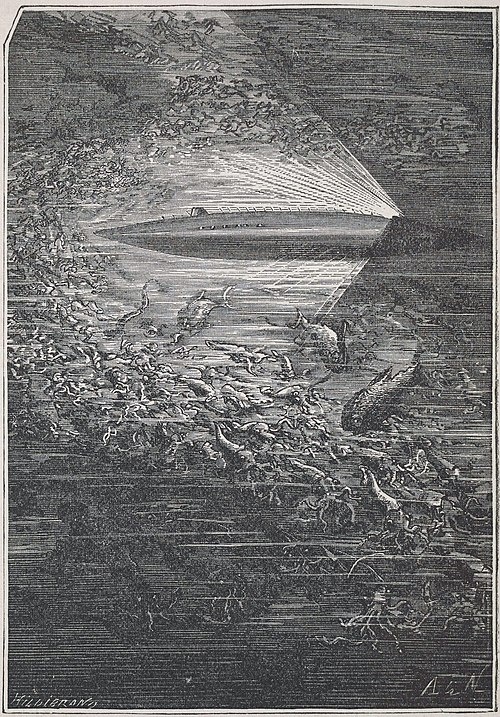
A drawing of the Nautilus from Twenty Thousand Leagues Under the Sea by Alphonse de Neuville. This work is in the public domain in its country of origin, other countries and areas where the copyright term is the author’s life plus 70 years or fewer via Wikimedia Commons.
While submarines did exist before Verne’s story — it’s believed that Verne named the Nautilus after a hand-powered submarine invented by Robert Fulton — they weren’t as advanced as the ones he described. Before Verne’s novel, submarines were predominantly human or steam powered and were both dangerous and inefficient. It was only in the 1880s, after Verne’s book was published, that submarines gained a reliable means of propulsion due to the advent of better battery technology.
While Verne was not an inventor himself, it’s clear that his story inspired engineers and inventors who have since paid homage to his story through the names of their own inventions. For example, Simon Lake, who developed the first submarine that could extensively navigate open ocean, claimed he was inspired after reading Verne’s story as a child. Not only that, but the world’s first nuclear-powered submarine, the USS Nautilus, bears obvious inspiration in the name and, much like the ship from Verne’s story, was capable of diving much longer than previous ships due to nuclear propulsion and was the first watercraft to reach the North Pole in 1958.
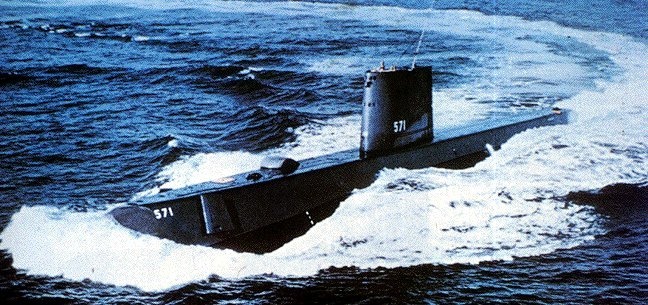
A photo of the USS Nautilus surfacing after a complete overhaul in 1960. This file is a work of a sailor or employee of the U.S. Navy, taken or made as part of that person’s official duties. As a work of the U.S. federal government, it is in the public domain in the United States via Wikimedia Commons.
2. Remote Manipulators
In the 1940s, there was a need to find a way to manipulate radioactive materials without having to be in close proximity to them. Fortunately, science fiction author Robert Heinlein had already envisioned this technology.
Heinlein’s short story “Waldo” details the life of Waldo Farthingwaite-Jones, a mechanical genius who has myasthenia gravis, a rare condition that causes muscle weakness and prevents him from being able to lift his head up to drink or to hold a spoon. He channels his intellect into developing a specialized device that allows him to control a powerful mechanical hand with a specialized glove. This device, patented as “Waldo F. Jones’ Synchronous Reduplicating Pantograph”, makes him extremely rich and allows him to build and live in a low-orbit space station.
While not strictly designed after Heinlein’s creation, early remote manipulators were sometimes called “waldos” to pay homage to the fictional invention that inspired them. As remote manipulators became more advanced, their use in uninhabitable environments also grew. Eventually, MDA Space Ltd. developed Dextre, a specialized manipulator capable of performing complex repairs on the International Space Station (ISS). This enables engineers to repair the ship without risking a spacewalk. With advancements in robotics and remote manipulators being made in industries such as healthcare, we can only anticipate the future impact of “waldos”.
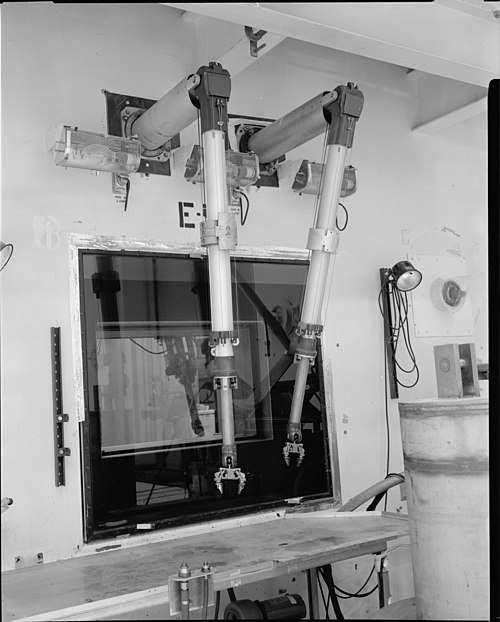

Left: A remote manipulator in the Area 25 Nevada Test Site. This image or media file contains material based on a work of a National Park Service employee, created as part of that person’s official duties. As a work of the U.S. federal government, such work is in the public domain in the United States via Wikimedia Commons. Right: The Dextre, a specialized remote manipulator developed by MDA and operated by NASA on the ISS. This file is licensed under the Creative Commons Attribution-Share Alike 3.0 Unported license via Wikimedia Commons.
3. Cellphones
It’s hard to understate the impact that the Star Trek series has had on society. In addition to inspiring a myriad of spinoffs, shows, and other science fiction pieces, it has also helped to promote public interest toward space exploration. Perhaps unsurprisingly, the series also forecasted many technological advancements, including bionic eyes reminiscent of Geordi La Forge’s VISOR, tasers that function like the stun setting on the Star Trek crew’s phaser weapons, or cellphones with capabilities like the “communicator”.
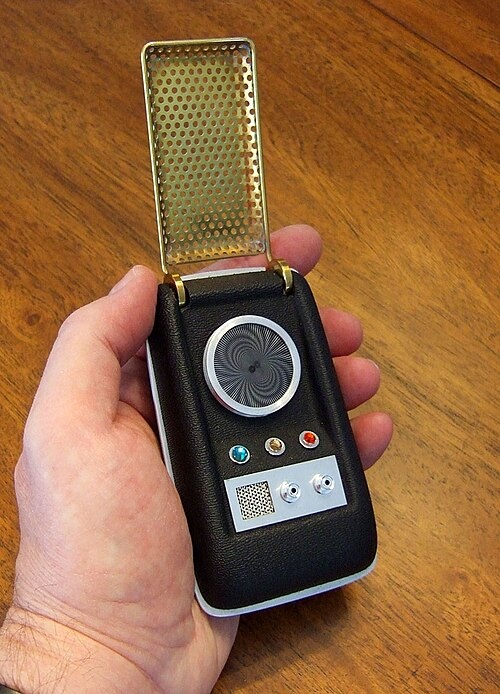
A reproduction of a Star Trek communicator which was originally designed by sculptor WahF Ming Chang. This file is licensed under the Creative Commons Attribution-Share Alike 3.0 Unported license via Wikimedia Commons.
The original communicator, pictured above, was used by the Starfleet crews during field missions. It had specialized “subspace transmissions” that allowed the crew to communicate with the spaceship without interference. Later communication devices appeared as wristwatches and badges on the crew’s suits.
While the earliest mobile phones didn’t quite live up to the fiction, the first commercially available cellphone was released in 1983 with the Motorola DynaTAC. Since then, phone technology has only continued to advance, with phones getting smaller and more powerful as time goes on. Although the “subspace transmission” of a Star Trek communicator is purely fiction, many other features have been realized through technology, like virtual assistants and GPS.
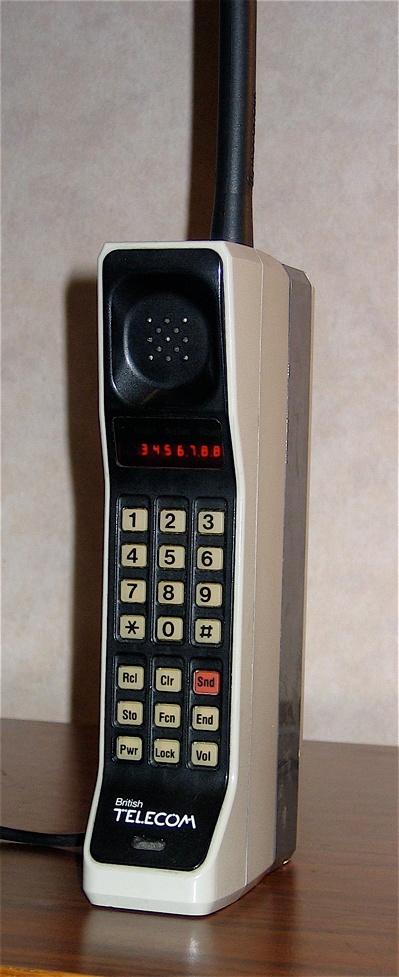
A Motorola DynaTAC 8000X, the first commercially available mobile phone. This file is licensed under the Creative Commons Attribution-Share Alike 3.0 Unported license via Wikimedia Commons.
4. Virtual Reality
Whether it’s used for dream control, creating a holographic room, or developing an entire world inside of a computer, virtual reality (VR) exists in countless pieces of fantasy and science fiction. In the real world, we saw virtual reality begin to materialize in the 1960s. Ivan Sutherland, a Harvard professor, created the first head-mounted display, which allowed projections of wireframe models into an eye display. However, due to the weight and size, the device had to be supported from the ceiling for one to actually use it. As VR technology advanced, it found usage in flight training by NASA, in psychological treatments for agoraphobia, and in engineering with interactive 3D models. Unsurprisingly, VR also has a large presence in the entertainment industry, with VR gaming becoming increasingly popular.
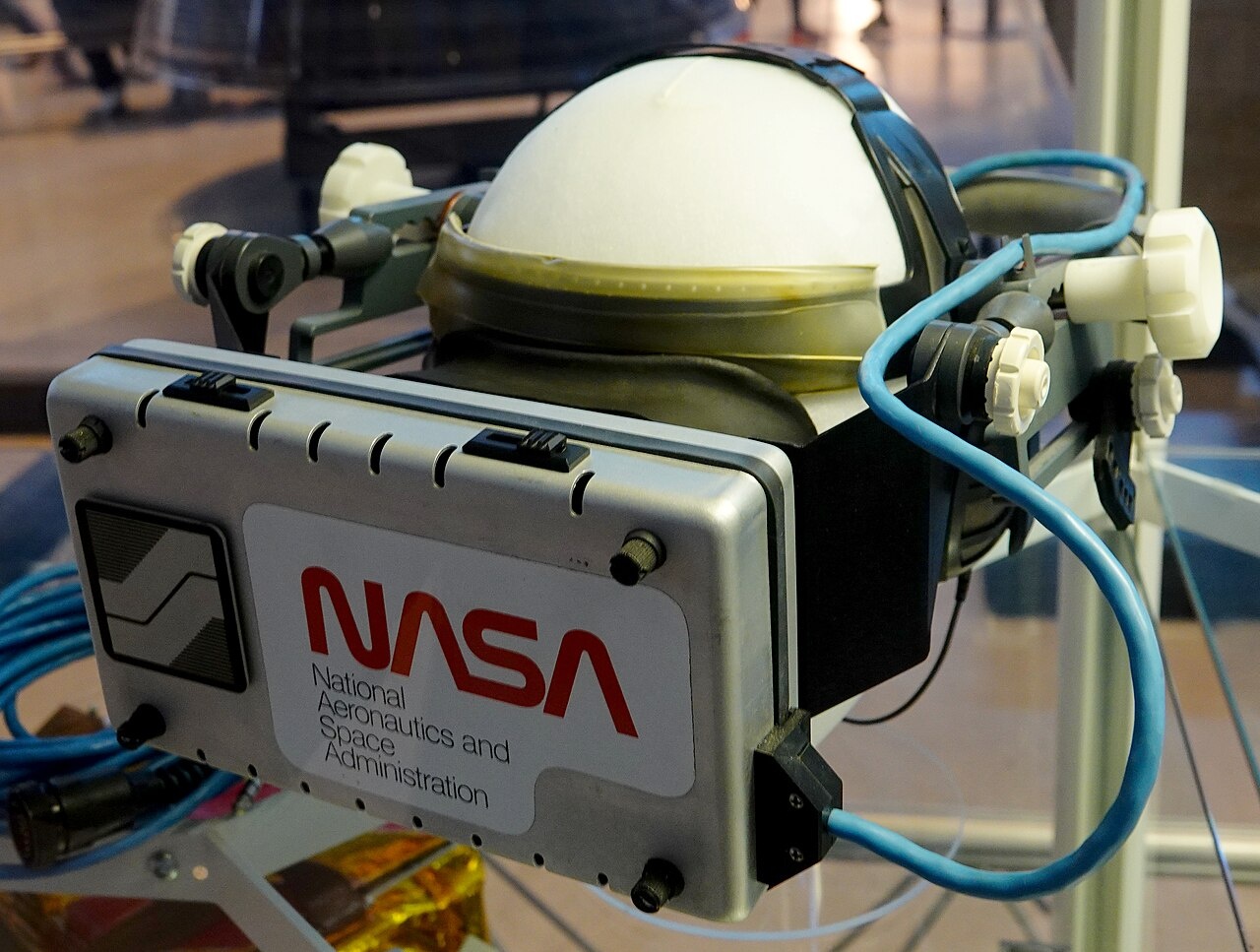
A photograph of an early virtual reality headset prototype developed by NASA to assist in training pilots and astronauts. This file is licensed under the Creative Commons Attribution-Share Alike 4.0 International license via Wikimedia Commons. COMSOL AB, its subsidiaries, and products are not affiliated with, endorsed by, sponsored by, or supported by the National Aeronautics and Space Administration (NASA).
While one of the first appearances of VR in science fiction comes from Laurence Manning’s 1933 short story “The Man Who Awoke”, it wasn’t until the 1980s and 1990s with stories like Neal Stephenson’s Snow Crash that we get something forecasting modern VR, in which terms like “avatar” and “metaverse” were popularized. Snow Crash describes a complete virtual world called the metaverse. In it, people can lead lives entirely different from their own through their avatars. Many saw appeal in this virtual world, and Stephenson’s story inspired a host of technology and media like Ready Player One or The Matrix.
Even though Stephenson’s novel is a dystopia, one can’t help but admit the allure of a virtual world, as it makes the impossible possible by offering access to immersive experiences that may not be accessible in the real world. As VR technology continues to advance, it may only be a matter of time until the technology Stephenson envisioned is a reality.
Further Reading
Want more science fiction content? Check out these posts on the COMSOL Blog to see how modeling and simulation can be used to better understand staples of science fiction, including giant monsters, self-driving cars, and Futuro houses:




Comments (0)